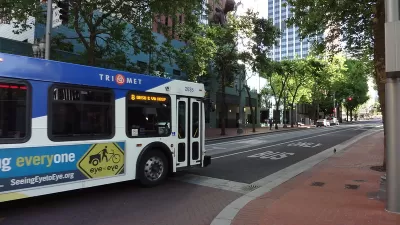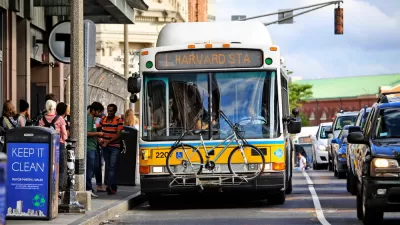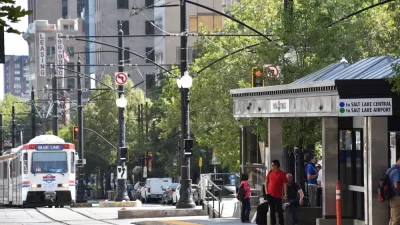The Utah Transit Authority is proposing a new approach to transit service design for the counties on the Wasatch Front, focusing changes on a "core route network" of frequent service.

The Utah Transit Authority (UTA) has revealed a new vision for bus and rail service for the next five years, focusing on a "core route network" of frequent service for the communities of the Wasatch Front.
Lee Davidson reports details and political background of the major service changes proposed by the UTA earlier this month, presented by UTA planners in context of the pandemic and a budgetary commitment to maintain service at 91 percent of pre-pandemic service levels.
UTA Planning Director Laura Hanson is quoted in the article discussing the need to stabilize the region's transit system. According to Hanson, the system's planners are being very cautious: "The worst thing possible would be to put service on the ground and then realize that we didn’t have the ability to keep it going."
The new five-year service design follows two years of public participation in the "Service Choices" outreach process.
According to Davidson, the key change is the plan's organizing principle around the network of high-frequency, core routes. Hanson is quoted in the article to explain:
“These are a series of routes that are frequent enough that you really don’t need a schedule,” Hanson said. “You know that if you’re on a core route, the bus or train will come within 15 minutes. It will run early in the morning, late at night, and seven days a week.”
A county-by-county list of proposed changes is included in the source article.
For more background on UTA's service design efforts, see an article published earlier in the month by Jasen Lee.
FULL STORY: UTA unveils 5-year service plan — envisioning a ‘core route network’ with service every 15 minutes

Maui's Vacation Rental Debate Turns Ugly
Verbal attacks, misinformation campaigns and fistfights plague a high-stakes debate to convert thousands of vacation rentals into long-term housing.

Planetizen Federal Action Tracker
A weekly monitor of how Trump’s orders and actions are impacting planners and planning in America.

In Urban Planning, AI Prompting Could be the New Design Thinking
Creativity has long been key to great urban design. What if we see AI as our new creative partner?

California Creates Housing-Focused Agency
Previously, the state’s housing and homelessness programs fell under a grabbag department that also regulates the alcohol industry, car mechanics, and horse racing.

Chicago’s Ghost Rails
Just beneath the surface of the modern city lie the remnants of its expansive early 20th-century streetcar system.

Baker Creek Pavilion: Blending Nature and Architecture in Knoxville
Knoxville’s urban wilderness planning initiative unveils the "Baker Creek Pavilion" to increase the city's access to green spaces.
Urban Design for Planners 1: Software Tools
This six-course series explores essential urban design concepts using open source software and equips planners with the tools they need to participate fully in the urban design process.
Planning for Universal Design
Learn the tools for implementing Universal Design in planning regulations.
planning NEXT
Appalachian Highlands Housing Partners
Mpact (founded as Rail~Volution)
City of Camden Redevelopment Agency
City of Astoria
City of Portland
City of Laramie





























